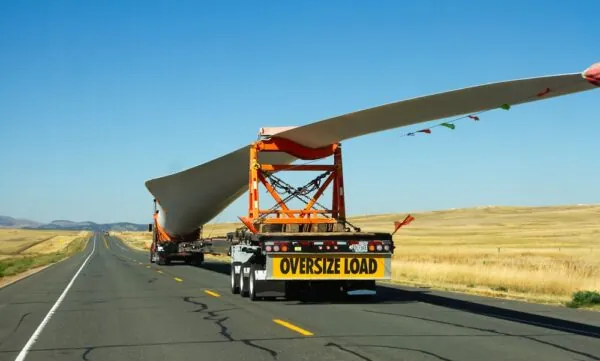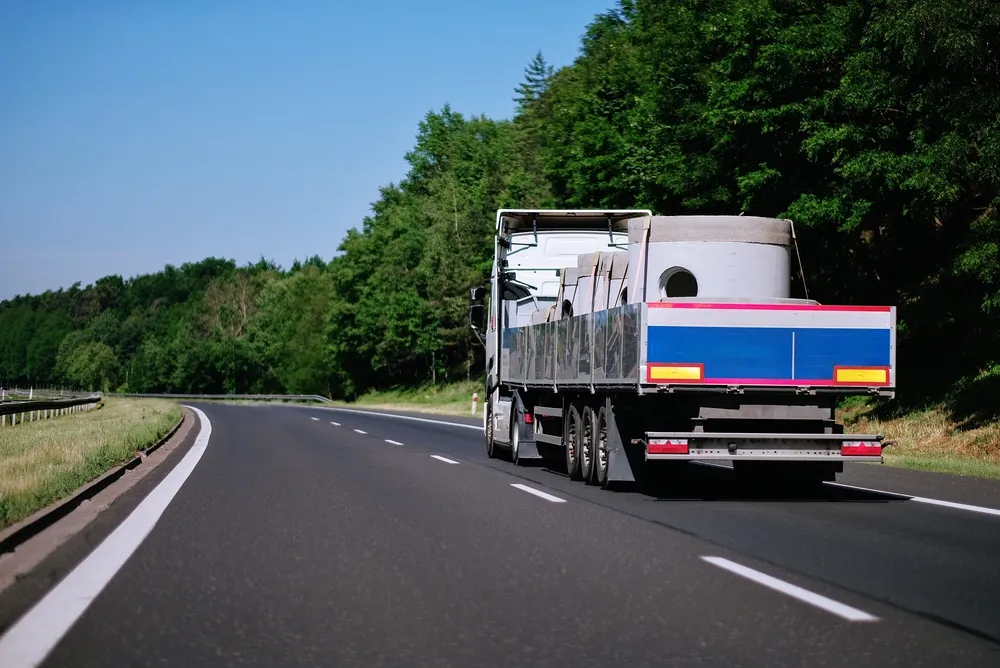What Is Out-Of-Gauge (OOG) Cargo?
Not all cargo fits neatly into standard-sized containers. This type of freight is referred to as out-of-gauge (OOG) cargo. A standard-sized container is 20 or 40 feet in length with a width of 8 feet. Out-of-gauge cargo does not fit into these dimensions. OOG cargo is also often significantly heavier than typical freight.
The unusual shape, heaviness, or oversized dimensions of this kind of freight make it very difficult to transport, leading to the use of specialized logistics planning and handling.
Out-of-gauge cargo includes items like:
-Heavy machinery
-Large pipes and steel
-Large industrial parts
-Wind turbine blades
-Large vehicles
-Yachts and boats

Transport Methods For Out-Of-Gauge Cargo
Have you ever been driving down the highway and seen a semi-truck transporting vehicles on autoracks? That is an example of out-of-gauge cargo. For heavy or oversized items, OOG cargo requires specialized transport, such as low-bed trailers or heavy-duty trucks.
Flat rack containers are open-sided containers that allow the cargo being shipped to extend beyond the dimensions of the container. Open-top containers are cases without a fixed roof, designed to accommodate shipments with extra height.
Platform trailers with no sides or roofs are used for extremely large freight. Extended trailers can accommodate the extra cargo length, and autoracks are used to transport things like automobiles.
Various methods help secure the freight. Blocking and bracing, which utilize wood or other materials to prevent movement during transit, are commonly employed in the transportation of out-of-gauge cargo. Ropes, chains, and straps are also used to secure the freight.

Considerations For Out-of-Gauge Cargo
Due to the unique logistics required to transport out-of-gauge cargo, several additional factors must be considered, including extra fees, permits, safety, and route planning.
Cost
Due to the unique equipment and handling required for shipping OOG cargo, freight costs are generally significantly higher. Logistics companies may charge extra fees for the various risks associated with transporting shipments, such as the risk of damaging other containers or limiting the amount of other cargo that can be loaded onto a truck or ship.
Additional costs for equipment needed to load or unload the freight may be incurred, depending on the size and weight of the cargo. Specialized equipment includes cranes, heavy-duty forklifts, roll-on/roll-off (RORO) ramps, and lifting frames.
Permits, Safety, And Route Planning
Obtaining permits is critical for transporting OOG cargo, especially for overland transport. Authorizations are essential for ensuring safety and protecting infrastructure.
These permits specify routes for drivers to follow, reducing the risk of hazardous conditions and preventing accidents, as oversized loads can pose a risk to other drivers on the road.
Overweight cargo can damage roads, bridges, and tunnels, so permits help route drivers in a way that reduces the potential for infrastructure damage.
Safety and route planning are essential in transporting OOG cargo. Transporting out-of-gauge cargo requires routes that avoid low bridges, narrow roads, and areas with weight restrictions.
As mentioned before, oversized cargo poses a risk to other vehicles on the road, so route planning is critical for the safety of both the public and the truck driver.
Authorizations are also crucial as carriers must comply with local, regional, and national transportation regulations. Permits also ensure the carrier has the appropriate insurance coverage for potential damages or accidents.
Many industries rely on the transport of oversized freight. Successfully transporting out-of-gauge cargo entails thorough planning and the use of unique equipment. In doing so, out-of-gauge cargo transportation can contribute to the seamless functioning of global supply chains.
If you plan to ship out-of-gauge cargo, please call our shipping experts at FreightCenter at (800) 716-7608 to schedule your shipment today.



